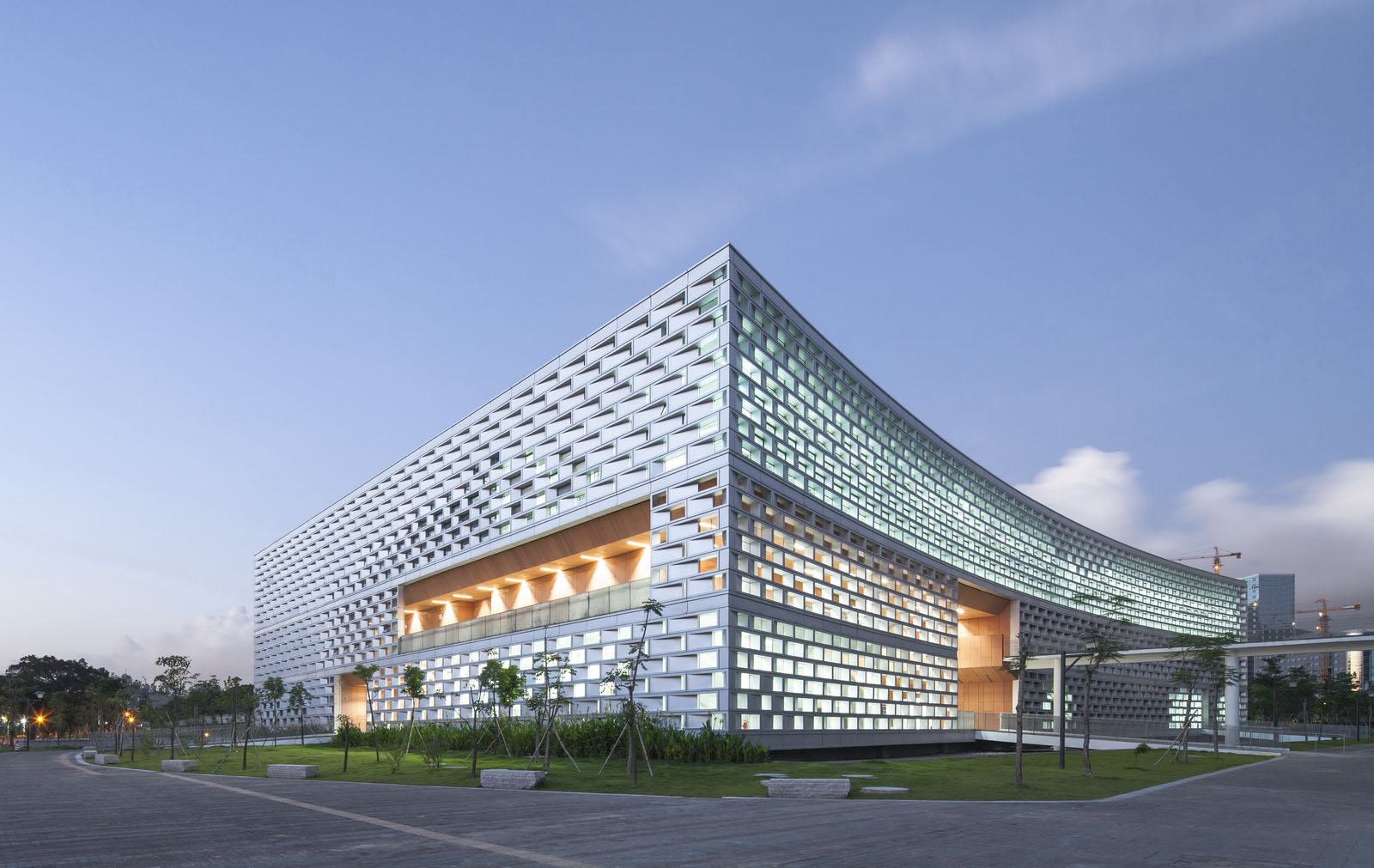Project General Manager: Zhang Changwen | Project Architect: Lin Yilin, Su Aidi
Team: Huang Zhiyi, Wang Jun, Zhu Lingli, Xie Shengfen, Li Jiajia, Chen Lansheng (Architecture) | Liu Shuang, Li Tu, Wu Jinbin (Interior) | Yao Dianbin (Technical Director)
Nowadays, as books cease to be the primary carrier for the spreading of knowledge, the meaning of “The Library” is also shifting. Recognizing this, the design not only incorporates the conventional programs of libraries, but also attempts to excavate what is embedded in libraries–the public nature that is closely associated with today’s society.
Located at the core of the campus, the library features a slightly curved façade, maintaining a humble stance towards its surroundings. Students and teaching staff who commute between the academic area and the living area on a daily basis will always pass by the library, regardless of which direction they are heading. Such circulation gives rise to a corridor system that crisscrosses throughout the building, referencing the traditional Cantonese commercial arcade adapted to hot and rainy climates, attracting the public to walk to the inside. Along the north-south corridor are the public programs, including the main entrance lobby, academic auditorium, association activity room, book bar, and so forth.
The corridor on the second floor extends from the west to the east—it passes by the book bar, skylight, multi-function hall, bamboo garden, reading area, semi-outdoor platform, and then finally ends at the Baishu Garden on the east. Overlapping circulation allows people to meet and communicate with each other; they can stop by to read or participate in academic activities, which will naturally become a part of their daily life. These create opportunities for a physical library to become more lively and inviting than a virtual library. On the top floor, 3,800 square meters of clear space serves an open-shelf reading area. In order to facilitate the role exchange between the modularized book collection area and the reading area, the structural load of this floor is customized for book collection areas; the column span is unified as 8,400*10,800mm.
GRC (Glass Fiber Reinforced Concrete) was originally specified for the library façade. With the consideration of façade scale, structural load, sizes of fabricated structural components, local shading requirement, and other factors, the GRC unitized component was designed into a light and high-strength hollow module that had a dimension of 1,800*675*400mm; its hollow core was then filled with insulating materials, with mold release and curing treatment. Due to various reasons, the client requested the material to be changed before construction. Eventually, silver grey, semi-unitized aluminum modules were assembled together in a staggered fashion. The aluminum modules were both water-proof and sunlight resistant, and were assembled following the original approach. For the crisscrossing corridors, orange high-strength fiber cement boards were applied to the ceiling and the wall. The orange color extends from the outdoor public space to the indoor public area, inviting people at the corridors to enter the building.
Credits and Data:
Project Location: The new campus of South University of Science and Technology of China, Xili Town, Nanshan District, Shenzhen
Project Period: 2010-2013
Project Status: Completed
Site Area: 8,628㎡
Floor Area: 10,728㎡
Building Storey: 3
Building Height: 16.5m
Client: Shenzhen Public Works Bureau | South University of Science and Technology Infrastructure Office
(LDI) Structure/ MEP (Mechanical, Electrical, Plumbing)/Interior Collaborator: Shenzhen Institute of Building Research Co., Ltd.
Photographer: Alex Chan
Publications:
孟岩. 南科大图书馆:从“大学城市”的构想到它的微观呈现. 建筑学报2014(7)
都市实践. 南方科技大学图书馆. Archdaily建筑网站. 2018.08.05
URBANUS. Library of South University of Science and Technology of China. Archdaily website. 2014.06.01

